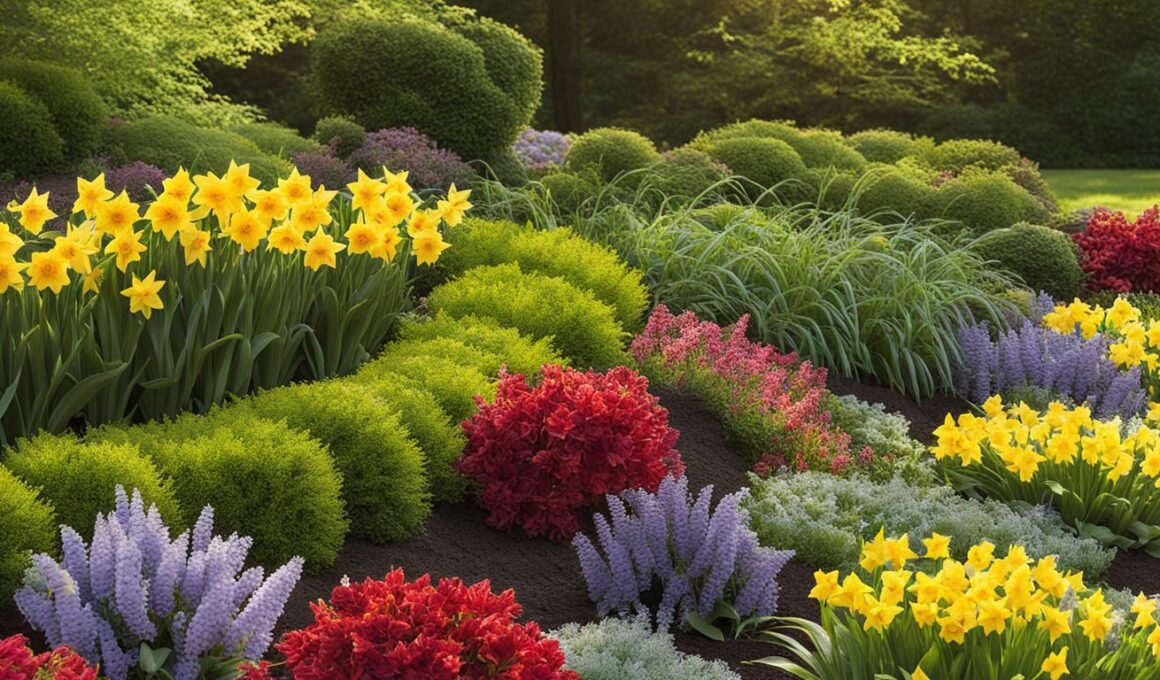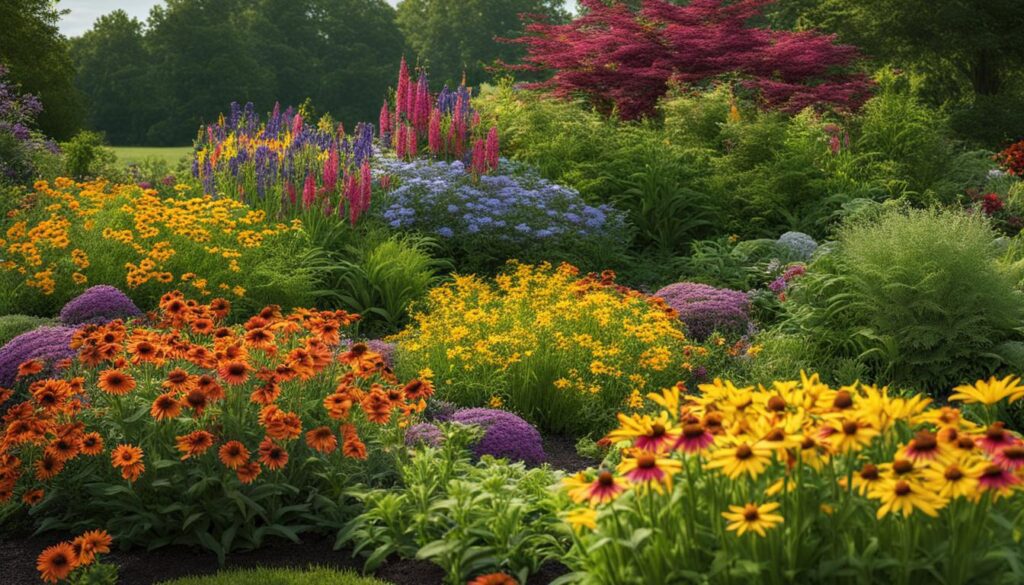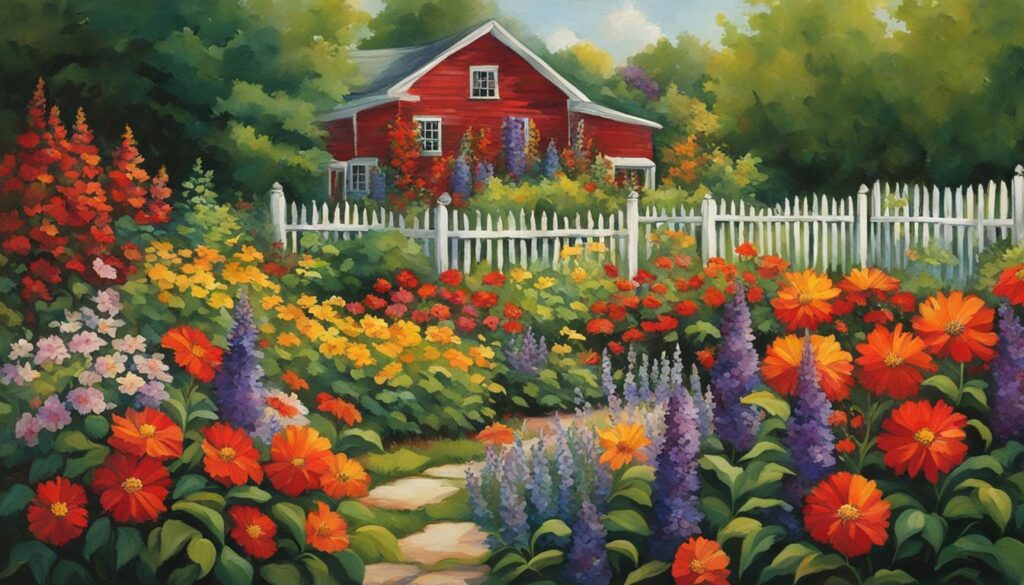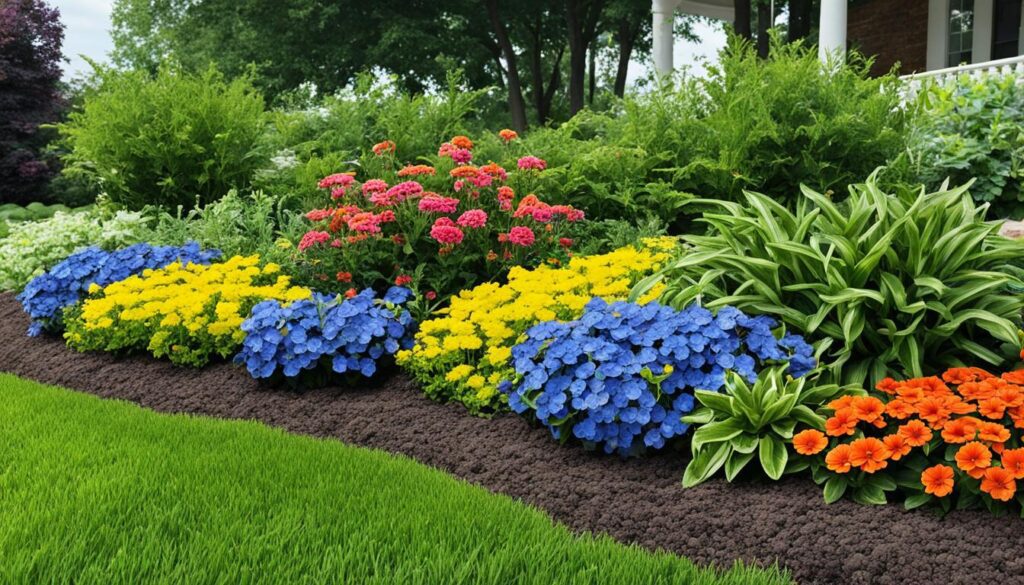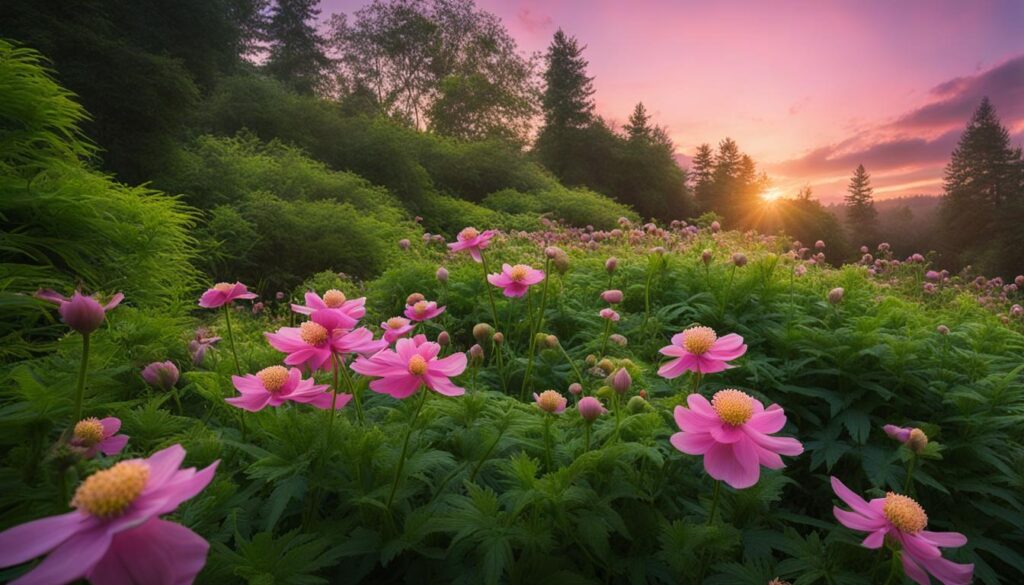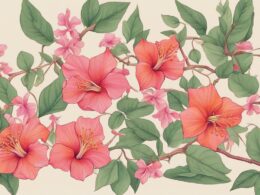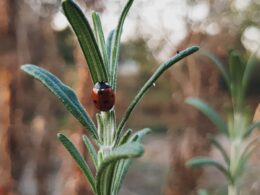Welcome to the world of Illinois Gardening, where a treasure trove of blooms awaits to transform your garden into a season-long spectacle. Whether you’re a green-thumb aficionado or a budding horticulturist, our essential Planting Guide shares the vibrant variety of the best flowers to embed in your Illinois soil. Understanding the unique USDA Hardiness Zones Illinois landscape offers is key to a flourishing floral habitat, ensuring each petal and leaf not only survives but thrives in the Prairie State’s diverse climate.
As you peruse the botanical wonders perfectly poised for Illinois grounds, embrace the journey of planting with confidence. Here you will find the blossoms that will make your garden glow through the changing Midwestern seasons. Let’s delve into the array of flora that stands ready to root firmly in your personal patch of earth, offering a burst of life and color with each returning year.
Understanding the Hardiness Zones in Illinois
As you delve into the art of gardening in the Prairie State, it’s essential to grasp the concept of Gardening Zones. The USDA Hardiness Zones are instrumental in guiding your planting choices and ensuring plant survival. Illinois embraces a spectrum of these zones—5, 6, and 7—each reflecting the unique Illinois climate nuances across the state.
- Zone 5 – Known for its cooler temperatures, this zone blankets the northern reaches of Illinois where only the hardiest species will prosper.
- Zone 6 – Central Illinois falls under this intermediate zone, offering a slightly warmer palette for a diverse garden.
- Zone 7 – As you journey towards the southernmost points of Illinois, you enter a warmer habitat suitable for a variety of vibrant florals.
Selecting plants that are attuned to these varying conditions not only promotes a thriving garden but also celebrates the beauty of local ecosystems. Let the hardiness zone be your compass, guiding your floral selections to match local climates for a garden that bursts with life, season after season.
With knowledge of the proper Gardening Zones, you’re equipped to make informed decisions, cultivating a lush oasis that aligns harmoniously with the Illinois climate. Remember, it’s not just about the beauty that blooms on the surface; it’s also about the roots that anchor deep within, weathering every season with resilience.
Best Flowers To Plant In Illinois
Embarking on your Illinois Gardening journey, you’re likely seeking perennial plants that promise both garden beauty and climate resilience. Not only do you want your outdoor space to look stunning, but you also need seasonal blooms that can handle the local climate. Here, we’ll introduce you to some of the most rewarding selections to help with your garden planning.
Native Beauties for Midwestern Gardens
Illinois native flowers are a testament to the Midwestern garden’s potential. Cultivating these local gems means inviting a piece of Illinois’ natural heritage into your backyard. Take the Tall Thimbleweed, for example, with its elegant star-shaped white blooms, a beacon of beauty for any passerby. Then there’s the pollinator favorite, Common Milkweed, with its clusters of pink-purple flowers. Not to be outshined, Groundplum Milkvetch adds a splash of pink, lavender, and blue-violet to the floral tapestry of your garden.
Picking Flowers That Thrive in Illinois Climates
Understanding your region’s climate is integral for picking flowers that flourish. As the early bloomers, Cream Wild Indigo and Wild Hyacinth come to life, offering a symphony of off-white and lavender-blue notes. When summer edges into autumn, White Turtlehead and Large Flower Tickseed stand out with splashes of white and vibrant yellow. For a touch of whimsy, include the delicate Rock Harlequin and the daisy-like Robin’s Plantain, which extends your garden’s bloom time with an enchanting display.
- Ensure your Illinois native flowers are suited for your specific hardiness zone for optimal growth.
- Consider the light and soil needs of each perennial plant to maintain garden beauty throughout the seasons.
- Balance color and blooming periods for a continuous display of seasonal blooms in your Midwestern gardens.
Gorgeous Perennials for Lasting Color
As you contemplate ways to infuse your Illinois garden with enduring vibrancy, consider the undeniable charm and resilience of perennial plants. Each season, these hardy varieties redefine garden beauty year-round, ensuring that your outdoor space is a burst of life no matter the time of year. Whether you seek the texture of foliage or the brilliance of blooms, Illinois perennials stand as steadfast companions in your horticultural pursuits.
Imagine the spectrum of color Coral Bells bring, ranging from the vivacious ‘Wildberry’ to the rich ‘Caramel’ tones. These perennials suit an array of roles from delicate borders to vibrant groupings. They blend seamlessly within both sunny spaces and dimmer nooks, revealing their semi-evergreen nature as they retain color throughout the colder months.
For the shaded areas of your garden, where sunlight is a valued commodity, Hostas become the hero. With a palette of colors and sizes—from ‘Dancing Queen’ to ‘Empress Wu’—they fill spaces with variegated greens and blues, all the while asking for very little in return. Hostas epitomize low-maintenance, high-impact gardening.
Standing tall among the whispering grasses, Karl Foerster Grass is known for its slender elegance. This ornamental grass, reaching heights of 4 to 5 feet, doesn’t spread uncontrollably, making it a polite backdrop to your perennial theatre. Its presence carries through winter, offering an architectural silhouette against the snow.
The fall season in Illinois is a spectacle not to be understated, and what better way to embrace it than with Hardy Hibiscus? These fanciful blooms, reminiscent of tropical climates, explode in a show of color—deep reds, soft pinks, and pure whites—offering a final, flamboyant flourish before the winter sets in.
Brightening up the edges of your garden, Dwarf Lythrum beams with vibrant pink flowers that, when maintained, can extend your garden’s color well into the cooler seasons. Equally tenacious and adaptable is Salvia, a plant that will gladly rebloom into autumn with a little care from you, adding dashes of deep purple, sky-blue, and even white to the late-season palette.
- Choose Coral Bells in shades that complement your landscape design, for lasting garden color.
- Opt for Hostas in shaded areas for their lush foliage and shade tolerance.
- Include Karl Foerster Grass to add vertical interest and a backdrop for lower-lying plants.
- Plant Hardy Hibiscus for a dramatic fall display of large, colorful blooms.
- Border your garden with Dwarf Lythrum and Salvia for extended blooming and color through the seasons.
When planting these recommended varieties, you can rest assured that your garden will exhibit the resilience and allure characteristic of Illinois perennials. Watch as your space transforms into a sanctuary of garden beauty year-round, captivating the senses and the hearts of those who wander through it.
Annuals Versus Perennials: Making the Right Choice
When your Illinois garden planning takes shape, facing the crossroads of choosing between annual flowers and perennial selection is inevitable. Understanding the distinctions and lifecycle nuances of these plants is foundational to achieving year-round blooms and long-term garden success. Annuals, enchanting as they may be, flourish for just one season, putting on a spectacular yet fleeting show.
Consider the vibrant poppy, renowed for its delicate, crepe-paper-esque blossoms. It comes to life in a burst of color, completing its leading act from spring through fall. Conversely, perennials like the beloved Daylilies and stately Asters play the long game, returning to center stage year after year with minimal fuss.
Here’s what you need to consider when selecting the floral cast for your Illinois garden tableau:
- Annuals offer a changeable palette, allowing you to redesign your garden’s color scheme every year.
- Perennials may have a more subdued flowering period, but their dependable reemergence is a gardener’s delight.
Factor in the garden’s maintenance when you make your selections. The ephemeral nature of annuals means replacing them each season, whereas perennials, once established, ask for far less, thereby reducing your gardening workload over time.
- Determine your desired balance between labor and continuity of bloom. Will you embrace the annual refresh or lean into the enduring charm of perennials?
- Assess the conditions of your garden’s setting. Is it attuned to the spectacular, though short-lived, show of annuals or the persistent allure of perennials?
Ultimately, your choice between annual and perennial plantings will dictate the rhythm and character of your garden. Annuals dance brightly but briefly, while perennials compose the perennial backdrop of your Illinois sanctuary. By choosing wisely, you cultivate not just a garden, but a narrative of year-round blooms that unfolds with every season.
Ideal Conditions for Illinois Plant Life
As you develop your green paradise in Illinois, understanding and optimizing the garden soil conditions will be crucial to your success. Your plants’ growth and health are directly influenced by the quality of soil, sunlight exposure, and water they receive. Illinois’s varied climate necessitates a strategic approach to ensure optimal plant growth.
For Illinois perennials like the enchanting White Turtlehead, rich, organic soils that retain moisture will help this beauty thrive. On the other hand, plants such as Variegated Liriope, with its striking green and white foliage, can also succeed in these lush conditions. Keeping the soil consistently moist is key for these types.
Moving on to species that are more adaptable, the stately Bluestar and hardy Subshrub Cinquefoil display great versatility by adapting to various types of soils. Whether you’re dealing with dry, arid plots, or the challenging clay, these resilient plants stand up to the test, making them perfect for the unpredictable Illinois summers.
- To ensure the garden soil conditions are suitable, have your soil tested periodically to adjust nutrient levels and pH accordingly.
- Be mindful of each plant’s sunlight exposure preferences—full sun, partial shade, or full shade—and place them in your garden where they can receive the right amount of light.
- Illinois Gardening Tips: Utilize mulching to retain soil moisture during hot spells, and consider native plants for drought-resistant options.
- For optimizing plant growth, incorporate regular feedings with a balanced fertilizer tailored to your specific plants’ needs.
Your thoughtful attention to these elements will not only foster strong roots and vigorous growth but also promises a garden that’s both a treat to the senses and beneficial to the ecosystem. Adapting to your environment is essential, and with the right knowledge, you can create a picturesque display that is quintessentially Illinois.
Elevating Gardens with Unique Flower Selections
Creating a remarkable display in your Illinois landscape means choosing flowers that are not only visually stunning but also compatible with the native ecosystem. Consider incorporating Illinois perennials that provide both aesthetic allure and environmental benefits. Two such plant varieties, with their unique attributes, have become essential to Illinois gardeners for their adaptability and the support they offer to local wildlife.
Tall Thimbleweed – Anemone virginiana
Tall Thimbleweed, also known as Anemone virginiana, is an illustrious Illinois perennial deserving of a special place in your garden. This Illinois native plant introduces enchanting star-shaped white flowers that float above deeply serrated, dark green leaves. A gentle spreader, it integrates harmoniously with other woodland garden plants, carving out its niche without dominating the space. It flourishes in a variety of soil conditions, from slightly dry to moderately moist, proving to be a splendid and resilient choice for your garden, whether situated in full sun or in the dappled shade of a tree canopy.
Common Milkweed – Asclepias syriaca
The Common Milkweed, known scientifically as Asclepias syriaca, isn’t merely a visually striking plant with its aromatic, pink-purple star-shaped flowers. It functions as a crucial nectar hub for a variety of pollinators, including monarch butterflies, offering substantial Monarch Butterfly Support. Embracing this Illinois native plant within your garden not only contributes to the local biodiversity but also supports these stunning pollinators in their lifecycle. Adaptable to both nutrient-rich and poor soils, including rocky terrains, the Common Milkweed is a resilient addition to any garden that comes with the added benefit of supporting local ecology. Remember to plant it in a location away from pets due to its toxicity when ingested.
- Include Anemone virginiana, or Tall Thimbleweed, for a subtle yet elegant charm in your garden.
- Asclepias syriaca, more commonly known as Common Milkweed, will not only enhance your garden’s beauty but also play a pivotal role in supporting local wildlife.
In crafting a garden that elevates beyond the standard fare, these selections offer you a route to a thriving and sustainable outdoor oasis. As you weave these Illinois native plants into your landscape, you’ll contribute to a richer, more diverse garden that both you and the local wildlife can enjoy throughout the seasons.
Low Maintenance Blooms for Busy Gardeners
If you’re someone with a demanding schedule but still possess a passion for cultivating a vibrant garden, you’ll be delighted with Low Maintenance Flowers that flourish without fuss. Illinois offers the perfect milieu for growing Perennial Favorites that bring Illinois Gardening Ease and the joy of nature to your doorstep with minimal effort.
Consider the unassuming beauty of hostas, the tenacity of yarrow, the charming appeal of ornamental onions, the straight-standing allure of switchgrass, and the resilience of geraniums. These are the warriors of the plant world, offering persisting splendor in the heat of Illinois Summers.
- Hostas: Thriving in both sun and shade, these leafy perennials exemplify Easy-Care Plants, their varied hues of green and blue standing as cool oases in your garden.
- Yarrow: With its love for the sun and drought-tolerant nature, yarrow demands little but rewards generously with its colorful, umbrella-like flowers.
- Ornamental Onions: These quirky blooms contribute both flair and flavor, proving that utility and beauty can be found in the same bulb.
- Switchgrass: For a touch of wild prairie spirit, switchgrass sways stoically, a testament to its independent streak and low maintenance needs.
- Geraniums: Hardy and reliable, geraniums pepper your garden palette with cheerful blossoms that return each year with heartwarming consistency.
Plants like these are the champions of Low Maintenance Flowers, requiring little beyond the initial planting and occasional watering. They are the stalwarts of the garden, knitted into the very fabric of a carefree Midwest garden, providing longevity and beauty without the regular rigors of gardening labors.
- Select perennials from this group to ensure your garden remains a beacon of beauty amidst a hectic lifestyle.
- Place these plants strategically to enjoy maximum beauty with minimum maintenance.
- Find peace in knowing that your little patch of green thrives under your care, even when your attention is divided.
Let your garden be a sanctuary of serenity with Easy-Care Plants bedecking every corner, assuring that even during the busiest days, a glance out the window reveals a scene of tranquility and enduring beauty.
The Role of Native Flora in Supporting Wildlife
As you explore the diverse and enchanting world of gardening in Illinois, it becomes evident that native flora plays a crucial role in the environment. Opting for native flowers over non-native species isn’t merely a matter of preference; it’s a strategic decision to actively participate in Biodiversity Enhancement within your own backyard. By incorporating plants indigenous to Illinois, you foster resilient Pollinator-Friendly Gardens that become havens for local creatures.
Rock Harlequin is a fine example of the synergy between Native Flora and Illinois Wildlife. Its fern-like leaves and delicate pink flowers do more than merely pleasing the eye—they serve as vital sustenance and habitat for bumblebees and butterflies. These intricate relationships between flora and fauna contribute to the maintenance and growth of local ecosystems.
- Native plants provide a food source for pollinators, contributing to their health and proliferation.
- Choosing plants like Rock Harlequin for your garden means giving back to the local wildlife, guiding the ecosystem towards a natural balance.
- Simple choices in your gardening practice can lead to significant Biodiversity Enhancement and support for various species.
The adoption of native species goes beyond personal satisfaction; it’s essentially about nurturing a landscape that supports the cycle of life. We encourage you to consider the lasting impact of curating a Pollinator-Friendly Garden rich with Illinois’s botanical treasures. Not only will you enjoy the beauty of these plants, but you will also contribute to a thriving habitat for Illinois’s myriad wildlife species.
Drought-Resistant Varieties for Illinois Summers
When facing Illinois Summers, marked by their notorious stretches of dryness, your garden’s survival hinges on selecting Drought-Resistant Plants. These botanical survivors stand resilient amid water scarcity, embodying the essence of Water-Wise Gardening. Imagine a landscape that not only endures the summer heat but thrives within it, conserving water while showcasing nature’s tenacity.
- Large Flower Tickseed (Coreopsis grandiflora) – This vivacious perennial is a beacon of brightness, offering an unyielding display of yellow blooms that can withstand the meager moisture of sandy or stony soils.
- Dwarf Lythrum (Lythrum virgatum ‘Dropmore Purple’) – Known for its captivating pink flowers, this sterile variety promises no aggressive spreading, making it an ideal candidate for controlled yet colorful gardens.
- Baptisia (Baptisia australis) – With its charming violet-blue flowers in spring and distinctive seed pods later on, Baptisia adds a layer of continuing interest throughout multiple seasons.
Dedicate a portion of your green space to these Hardy Flowers, each inherently equipped with a tenacious spirit for the Midwestern climate. These varieties are the brave face of your garden, defying arid conditions, and ensuring a lush, verdant domain, year after year.
Embrace these drought-resistant marvels in your Illinois garden planning. They are not just a smart choice for sustainability; they’re a testament to the beauty and resilience possible in your home’s outdoor sanctuary. Let these selections arm your garden against the intensity of the summer heat, achieving both an ecological balance and an aesthetical triumph.
Flowers That Offer More Than Aesthetics
When you integrate certain ornamental flowers into your Illinois landscape, you’re embracing more than just their stunning presence. These plants confer a slew of additional benefits, contributing greatly to garden functionality, habitat restoration, and soil erosion prevention. As you plan your garden, consider varieties like the Rock Harlequin and the resplendent Aster, which not only captivate with their beauty but also perform crucial roles in the environmental tapestry of your backyard.
Delicate yet robust, Rock Harlequin showcases an array of light pink blooms adorned by touches of yellow—ornate additions to any space. Beyond aesthetics, this plant is instrumental in maintaining the integrity of your garden’s soil. Its roots create a natural mesh that holds the earth in place, combating soil erosion and making it an ally against the forces that threaten land stability.
Similarly, the ever-popular Aster and vivacious Daylilies are more than meets the eye. Asters serve as a magnet for a variety of pollinators, from bees to butterflies, bolstering local ecosystems. Daylilies stand their ground, quite literally, with a deep-rooting system that ensures they remain steadfast on slopes and elevated beds, preventing the soil from shifting downhill.
- Aster: Attracts vital pollinators ensuring habitat restoration.
- Daylilies: Helps in soil erosion prevention with their deep roots, particularly effective on slopes.
As you plant these multifunctional flowers in your garden, you’re doing more than decorating your outdoor spaces. You’re actively engaging in enhancing the local habitation for wildlife while maintaining the integrity of the land. In choosing such varieties, you are securing a beautiful, yet functional and environmentally friendly garden scene right in your own backyard.
Conclusion: Cultivating a Flourishing Illinois Garden
As the seasons unfurl their tapestry across the Illinois landscape, your garden too can mirror this richness with astute flower planting strategies. The journey to a sensational garden teems with possibilities, from the delightful star-shaped petals of Tall Thimbleweed to the show-stopping blooms of Hardy Hibiscus. These choices are not just about Floral Enhancement but also about embracing Seasonal Blooming as a harmonious aspect of the local environment.
Your approach to Illinois Flower Planting should be both mindful and visionary, drawing upon a spectrum of hardy native species and adaptable plants that promise year-round beauty. Whether your green thumb leans towards plants that require minimal attention or those that play a vital role in supporting local wildlife, Illinois offers a dynamic selection that caters to every gardener’s aspirations. The right Garden Strategies will usher in an era of serenity and beauty, turning your outdoor space into a resilient and vibrant refuge.
In embracing these principles, you’re poised to enhance your surroundings with a garden that not only blooms spectacularly through each season but also contributes to the ecological balance of the region. It’s clear that the key to a thriving flower garden in the Prairie State lies in conscious planting paired with passion. By incorporating the varieties and techniques highlighted, your garden will not only captivate but also flourish, embodying the essence of Illinois Flower Planting at its finest.
Are the Best Flowers to Plant in Colorado Similar to those in Illinois?
When it comes to choosing the best flowers for Colorado planting, it’s important to consider the climate and soil conditions. While some flowers may thrive in both Colorado and Illinois, it’s crucial to select varieties that are well-suited to the specific environment of each region.





